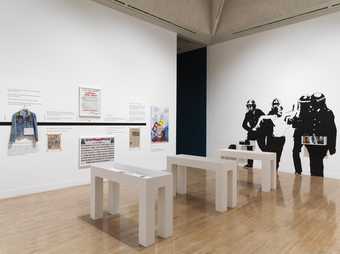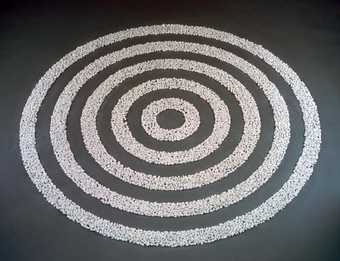
Richard Long CBE
Small White Pebble Circles
(1987)
Tate
Tate’s collection includes groups of works which have been acquired by gift or bequest. These range from the vast Turner Bequest to small, highly focused collections.
Explore some of the most important gifts and bequests
Artangel Collection at Tate
The Artangel Collection at Tate comprises ground-breaking moving image projects by internationally renowned artists and filmmakers. These works have been commissioned and produced by Artangel over the past 20 years and, as part of Tate’s collection, they are available for loan.
The initiative enables notable film and video installations to be presented in galleries and museums across the UK, as well as in spaces beyond the gallery. The Artangel Collection at Tate includes works by Francis Alÿs, Catherine Yass, Jeremy Deller, Atom Egoyan, Paul Pfeiffer and Tony Oursler.
ARTIST ROOMS
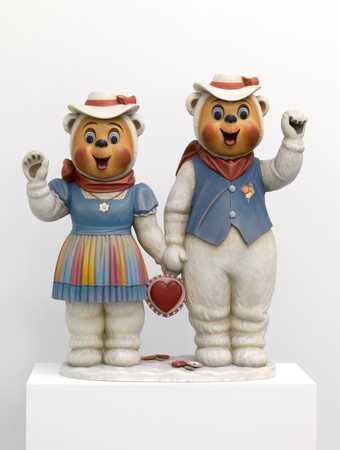
Jeff Koons
Winter Bears
(1988)
ARTIST ROOMS Tate and National Galleries of Scotland
ARTIST ROOMS is a collection of international contemporary art which has been created through one of the largest and most imaginative gifts of art ever made to museums in Britain. The gift was made by Anthony d’Offay in 2008, with the assistance of the National Heritage Memorial Fund, The Art Fund and the Scottish and British Governments. ARTIST ROOMS is jointly owned and managed by National Galleries of Scotland and Tate on behalf of the nation.
Art Fund
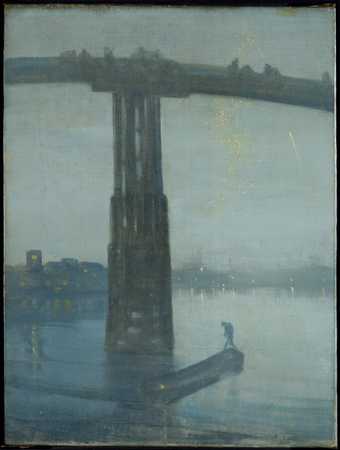
James Abbott McNeill Whistler
Nocturne: Blue and Gold - Old Battersea Bridge
(c.1872–5)
Tate
The Art Fund was launched in 1903 and it has since become Britain’s leading charity for the purchase of works of art for the nation’s collections.
More than 400 works have been acquired by Tate with assistance from the Art Fund. The first of these was J.M. Whistler Nocturne: Blue and Gold – Old Battersea Bridge circa 1872–5, acquired in 1905. More recent acquisitions assisted by the Art Fund are Piet Mondrian’s Sun, Church in Zeeland; Zoutelande Church Facade 1909–10, David Smith’s Wagon II 1964 and Rebecca Horn’s Concert for Anarchy 1990.
C. Frank Stoop

Paul Cezanne
The Gardener Vallier
(c.1906)
Tate
C. Frank Stoop formed an important collection of modern paintings during the 1920s. As a long-standing supporter of Tate aspirations through the Contemporary Art Society, he generously made a gift and bequest of his whole collection in 1933. This included works by Paul Cézanne, Pablo Picasso, Henri Matisse and Amedeo Modigliani that formed the core of the collection of international art. They remain key Tate works.
Chantrey Bequest
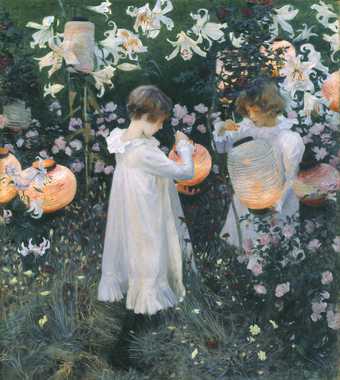
John Singer Sargent
Carnation, Lily, Lily, Rose
(1885–6)
Tate
The sculptor Sir Francis Chantrey (1781–1841) bequeathed a fortune, and asked that the income on the money be used to buy paintings and sculpture made in Britain with a view to encouraging the establishment of a public national collection of British fine art. The fund is administered by the Royal Academy of Arts, and the first work was bought for the collection in 1877, following the death of Lady Chantrey. After the founding of the Tate Gallery in 1897 the Bequest was allocated to support Tate acquisitions. Until the 1920s this was the main purchase grant for the Tate Gallery.
Contemporary Art Society

Spencer Gore
Houghton Place
(1912)
Tate
The Contemporary Art Society was founded in 1910 to promote modern art and enhance its representation in public museums and galleries. It has since presented over 5,000 works to its member museums throughout Britain. The Society purchases contemporary art by inviting individuals, ranging from critics to private collectors, to identify works which will significantly benefit the permanent collections of museums. Funds for purchases are raised through museum and individual subscriptions, grants, and generous gifts from individuals.
Curwen Studio
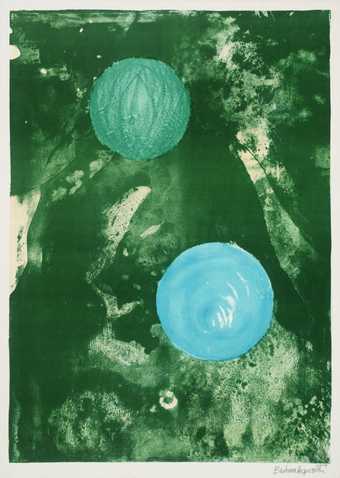
Dame Barbara Hepworth
Sun and Marble
(1971)
Tate
Together with the Rose and Chris Prater Gift, the Curwen Studio Gift was a founding gift of Tate’s modern print collection in the mid-1970s, totalling some 650 lithographs by such artists as Henry Moore, Barbara Hepworth, Graham Sutherland and John Piper. Curwen Press was first established in 1863, dedicated to printing illustrated books. In the late 1950s Curwen Studio was set up in order to allow for the production of artists’ original prints. It specialised in the technique of lithography under the expert guidance of Stanley Jones and continues to operate today.
E.J. Power
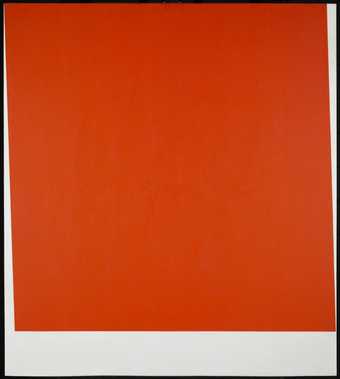
Ellsworth Kelly
Broadway
(1958)
Tate
E.J. Power (1899–1993) was a champion of modern and contemporary art and one of Tate’s most generous and consistent supporters. A Tate Trustee from 1968–75, he donated works by British and foreign artists, always aiming to increase the gallery’s representation of new art. In 1980 Tate acquired a group of works from him that included important paintings by Barnett Newman and Jean Dubuffet. His gift comprises 23 works in all, including an important small early work by Joseph Beuys, presented through the Friends of the Tate in 1974. After Power’s death six further works from his estate were allocated to Tate by the Department of National Heritage in lieu of tax. Power played an important role in the British art scene for many years, through his collecting and his friendships with artists.
Gustav and Elly Kahnweiler
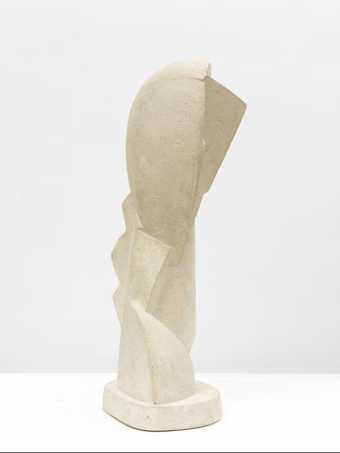
Henri Laurens
Head of a Young Girl
(1920)
Tate
Gustav (1895–1989) and Elly (1901–1991) Kahnweiler were among the most significant collectors in Britain in the 1950s and 1960s. Their collection was strongly influenced by the taste and activities of Gustav’s older brother, the Paris-based dealer Daniel-Henry Kahnweiler (1884–1979). A key figure in twentieth-century art, he represented the foremost Cubist artists, notably Pablo Picasso, Georges Braque, Juan Gris and Fernand Léger. The Kahnweilers left their collection to Tate with the understanding that minor works could be sold to purchase a more significant work. In 2003 Tate was able to acquire Braque’s The Billiard Table 1945, a fitting tribute to the Kahnweilers and their love of Cubism.
Henry Tate Collection
Sir Henry Tate (1819–1899) started his business career in 1832 as an apprentice grocer in Chorley, Lancashire. By the 1870s he was a leading sugar refiner with much of his fortune derived from holding the patent rights to making sugar cubes. By the 1880s he had started buying paintings by living British artists and he first offered these as a gift to the nation in 1889. By 1892 Sir Henry Tate had finalised this offer together with the further offer to build at his own expense a gallery for British art. This was opened on Millbank in 1897 and soon became known as the Tate Gallery.
The original 65 works presented by Sir Henry Tate included two that became among the most popular works in the gallery – J.E. Millais’ Ophelia 1851–2 and J.W. Waterhouse’s The Lady of Shalott 1888. Other artists represented in the gift include Lady Butler, Stanhope Forbes, Sir Edwin Landseer and Sir William Quiller Orchardson.
Heritage Lottery Fund
Following the establishment of the National Lottery in December 1992, the Heritage Lottery Fund was formed to distribute funds to cultural causes. Tate has made a number of applications that have helped to secure important works for the nation. These range across all areas of Tate collecting, from the Oppé Collection of watercolours to Jacob Epstein’s sculpture and Francis Bacon’s drawings.
Janet Wolfson de Botton

Richard Long CBE
Small White Pebble Circles
(1987)
Tate
In 1996 Janet Wolfson de Botton presented 60 contemporary works to Tate and these were exhibited at Tate in 1998. The gift includes paintings, drawings, sculptures and photography by thirty artists. With this gift, Tate was able to strengthen its representation of such artists as Carl Andre, Richard Artschwager, Gilbert & George, Richard Long and Cindy Sherman. Artists entering the collection for the first time included Roni Horn, Gary Hume, Reinhardt Mucha and Nancy Spero. Other important works include an early Andy Warhol Electric Chair 1964 and Bill Woodrow’s Elephant 1984. Janet de Botton has been closely involved with Tate for a number of years and was appointed a Trustee in 1992. She is known as an advocate and collector of contemporary art and her gift was made as a gesture of support for the creation of Tate Modern and Tate Britain.
McAlpine
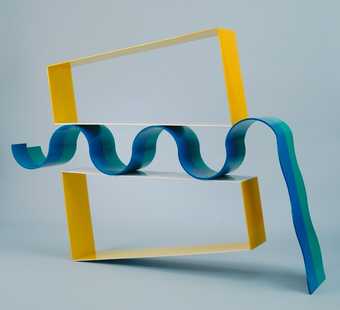
David Annesley
Swing Low
(1964)
Tate
In 1970 Alistair McAlpine (later Lord McAlpine of West Green) generously presented to Tate 60 recent sculptures from his private collection. This major gift comprises works by David Annesley, Michael Bolus, Phillip King, Tim Scott, William Tucker, William Turnbull and Isaac Witkin. The acquisition of these works significantly strengthened Tate’s holdings of 1960s abstract sculpture, whose main characteristics include the use of bright colour and unconventional materials such as steel, fibreglass, aluminium, perspex and glass. Lord McAlpine has separately presented works by Sir Sidney Nolan and other artists.
Mrs A.F. Kessler
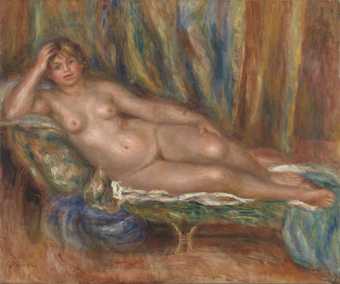
Auguste Renoir
Nude on a Couch
(1915)
Tate
Anne Kessler began to collect in the 1930s, inspired by the example of her uncle C. Frank Stoop. She acquired works by Pablo Picasso, Henri Matisse, Amedeo Modigliani and Raoul Dufy, whom she commissioned to paint her family portrait. With great generosity, Mrs Kessler followed her uncle’s example in 1983 by leaving her collection to Tate, where they remain key works.
National Heritage Memorial Fund
The National Heritage Memorial Fund (NHMF) was established in 1980 in memory of those who have given their lives for the nation. Its purpose is to protect the most important aspects of the national heritage and in 1992 it became the distributor of the Heritage Lottery Fund. Tate has been made a number of applications to the NHMF that have resulted in substantial contributions towards securing pre-eminent works for the nation. Though predominantly British works, these range across all areas of Tate collecting, from John Constable’s The Opening of Waterloo Bridge (‘Whitehall Stairs, June 18th, 1817’) exhibited 1832 to Pablo Picasso’s Weeping Woman.
Oppé Collection
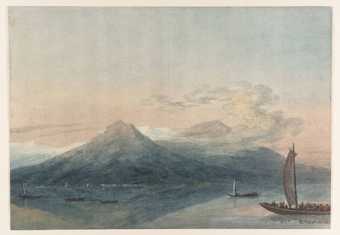
John Robert Cozens
View from Isola Borromea, Lago Maggiore
(c.1783)
Tate
Paul Oppé (1878–1957) started collecting English watercolours in 1904. At the time of his death his collection had expanded to include drawings, oil sketches and prints by many major and lesser known British artists. Consisting of more than 3,000 works spanning the seventeenth century to the early twentieth, it was one of the most significant collections of British art in private hands and formed the basis of much of Oppé’s pioneering scholarship in the area. The collection was acquired by Tate in 1996 with the assistance of the National Lottery through the Heritage Lottery Fund. The National Art Collections Fund also contributed to the acquisition by purchasing two works for Tate. The greatest strength of the collection lies in the eighteenth century. It includes watercolours by Alexander and John Robert Cozens, John Downman and Francis Towne and oils by Thomas Jones. From the nineteenth century there are works by John Constable, J.S. Cotman, George Richmond, J.M.W. Turner and J.W. Inchbold.
Outset / Frieze Art Fair Fund to benefit the Tate Collection: Ten Years 2003–2012

Martin Boyce
Gate (We don’t meet here. We are always together first.)
(2004)
Tate
Since 2003, the Outset / Frieze Art Fair Fund has enabled Tate to acquire important works by emerging and leading international artists from the Frieze Art Fair. Each year, prominent international curators are invited to work alongside Tate curators to select works for the Collection. The Fund provides a generous contribution towards Tate’s ongoing strategy to develop its Collection and has generated more than £1 million to acquire a staggering 86 works by 56 artists over the last ten years.
The Outset / Frieze Art Fair Fund to benefit the Tate Collection is organised and funded by Outset Contemporary Art Fund and has been supported by Le Méridien Hotels & Resorts since 2008.
Patrons of British Art

Absalon
Cell No. 1
(1992)
Tate
Established in 1982, the Patrons of New Art support Tate’s collection of contemporary art through a wide range of acquisitions of work by artists of international repute. Many of the works they have presented make use of new media and technologies. Among the artists whose work the Patrons have acquired are Absalon, Doris Salcedo, Bill Viola, Jeff Wall, and Rachel Whiteread. The Patrons’ Special Purchase Fund acquires work by younger artists, many of whom were previously unrepresented in Tate’s collection.
Robert Vernon
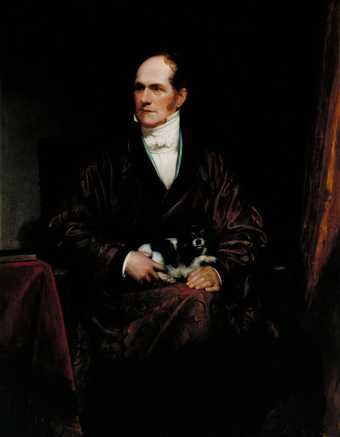
Henry William Pickersgill
Robert Vernon
(1846, exhibited 1847)
Tate
Robert Vernon started collecting modern British art in the mid-1820s. In 1847 he took the first practical step towards the creation of a national gallery of British art when he presented 166 paintings and sculptures from his large collection to the National Gallery. It included paintings by Joshua Reynolds, Thomas Gainsborough, John Constable and J.M.W. Turner and sculptures by E.H. Baily and John Gibson. After the opening in 1897 of the Tate as the National Gallery of British Art, all the works in Vernon’s gift were gradually transferred from the National Gallery. Out of the original gift one painting by a foreign artist was retained by the National Gallery and some portraits were later transferred to the National Portrait Gallery. Four paintings from the Vernon gift were destroyed in the 1928 Thames flood and one was destroyed during the Second World War.
Rose and Chris Prater
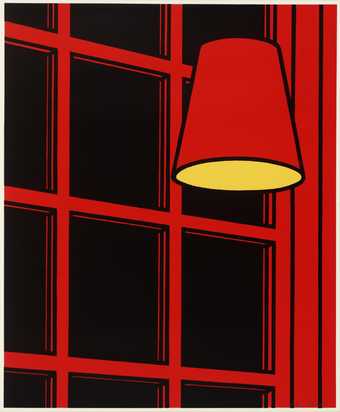
Patrick Caulfield
Interior: Night
(1970–1)
Tate
© The estate of Patrick Caulfield. All Rights Reserved, DACS 2023
The Prater Gift, the majority of which was presented in 1975, was one of the founding gifts of Tate’s modern print collection, alongside the Curwen Studio Gift. In the late 1950s Rose and Chris Prater established Kelpra Studio, a print workshop dedicated to the comparatively modern technique of screenprinting. Kelpra Studio was pivotal in the development of the medium throughout the 1960s and 1970s, introducing many artists, British and foreign, to the artistic possibilities of screenprinting. The Praters generously gave Tate a copy of every print that they produced. Among the artists who worked at Kelpra Studio were Richard Hamilton, Eduardo Paolozzi, Patrick Caulfield and Peter Blake.
Tate American Fund

Donald Judd
Untitled (DJ 85-51)
(1985)
Tate
© Donald Judd Foundation/VAGA, New York and DACS, London 2023
The Tate American Fund was established in 1988 with an anonymous gift of $6 million. The income from this endowment allows the American Fund to purchase works of art by artists working in the Americas which are lent, and some given, to Tate. Recent acquisitions by the Fund have included works by Louise Bourgeois, Philip Guston, Donald Judd, Ellsworth Kelly, Ernesto Neto and Adriana Varejao. The American Fund also facilitates gifts and bequests of works of art by artists of any nationality, and cash donations, from United States taxpayers. The Tate American Fund established a Development office in New York in September 1999. Its purpose is to increase support for and awareness of Tate and to encourage American participation in the expansion of its collections, programmes and buildings.
Tate Members
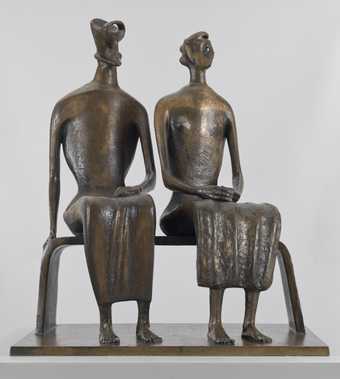
Henry Moore OM, CH
King and Queen
(1952–3, cast 1957)
Tate
Tate Members was founded as Friends of the Tate Gallery in 1958 to raise money for the purchase of works of art across the range of the Tate collection, to create wider support for Tate, and to promote its aims to the general public.
The first of around 400 works presented was Henry Moore’s sculpture King and Queen 1952–3, acquired in 1959. Henri Matisse’s The Snail 1953 was acquired through the Tate Members in 1962. They have also assisted with other notable purchases, among them John Constable’s The Opening of Waterloo Bridge (‘Whitehall Stairs, June 18th, 1817’) exhibited 1832, Pablo Picasso’s Weeping Woman, Gawen Hamilton’s The Du Cane and Boehm Family Group 1734–5, Joseph Wright of Derby’s Vesuvius in Eruption, with a View over the Islands in the Bay of Naples circa 1776–80 , Stanley Spencer’s Zacharias and Elizabeth 1913–14, and Andreas Gursky’s Parliament 1998.
Turner Bequest
In 1856, nearly five years after J.M.W. Turner’s death, his estate was settled by a decree in which the works found in his studio that were considered to be by his own hand were accepted by the nation as the Turner Bequest. This comprises nearly 300 oil paintings and around 30,000 sketches and watercolours (including 300 sketchbooks), with a small number of collaborations and works since identified as being by other artists.
The bequest forms the great majority of the works by Turner in the Tate. However, there are also a small number of works which have been acquired independently, including the Vaughan Bequest. A group of nine paintings from the Turner Bequest is retained at the National Gallery to show Turner’s work in a broader international context.
The Watts Gift

George Frederic Watts and assistants
The Court of Death
(c.1870–1902)
Tate
In 1897 George Frederic Watts donated eighteen symbolic paintings to the newly-established Tate Gallery; he was the only artist to make such a donation. Later he gave three more works, including his sculpture Clytie 1868–78 and the monumental Court of Death 1870–1902. The majority of these paintings relate to an ambitious but incomplete series called The House of Life. They were regarded as both consolatory spiritual statements and trenchant condemnations of pervasive modern vices such as gambling, materialism and sexual exploitation.
By the end of the nineteenth century, the Watts Gift rivalled that of the Turner Bequest as a collection of national importance. The relevance of his message for modern times reached a peak during the First World War, when the Watts Gallery at the Tate was viewed as a secular chapel for personal meditation, a space that bears comparison to Tate Modern’s Rothko room in more recent times. The Tate collection now includes 44 artworks by Watts.
Works allocated by HM government in lieu of tax
Post-war changes in the law concerning inheritance tax have allowed collectors to offset the amount owed in death duties in the form of art works. These paintings and sculptures are effectively transferred to the Treasury and are then allocated by the government to appropriate museums and galleries. During the last 20 years the Tate collection has benefited greatly from this procedure. In 1984 it was allocated 20 paintings by J.M.W. Turner that had been acquired directly from the artist by his patron, George O’Brien Wyndham, 3rd Earl of Egremont. More recent acquisitions have included J.E. Millais’s Mariana 1851 and work by important twentieth-century artists, including Constantin Brancusi, Francis Picabia and Barbara Hepworth.

